Estes Night Wing
By Lester Anderson
2015-10-12
An interesting looking fighter jet style rocket from Estes. It uses the SR-71 kit nose cone, and main body tube. Most everything else is unique to the kit.


Parts
2015-10-12
To start with we have our parts layout. This kit pre dates the industry using laser cut fins, so all the fin sheets are die cut. Surprisingly for mine , all of the line from the die cut are very thin. This one must have been an earlier one from the production run while all of the dies were still sharp.
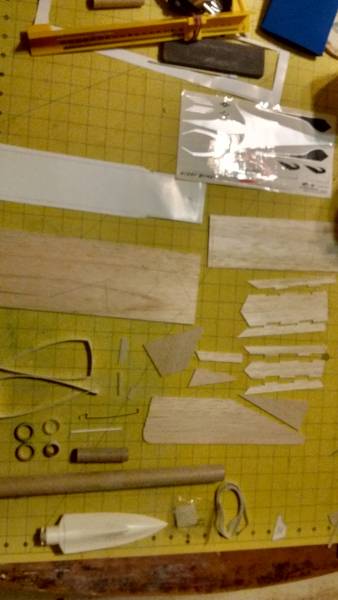
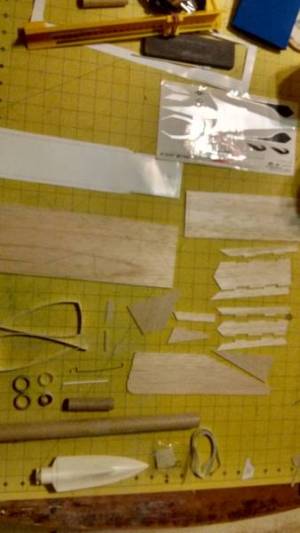
Motor mount
2015-10-12
Per my usual process, I'm starting with the motor mount. This kit uses standard Estes engines of the 18 millimeter variety. So we have a short piece of bt20 motor mount tube, two centering rings, a thrust block, in an engine clip. I am going to be adding a Kevlar anchor on the engine mount for the shock cord.
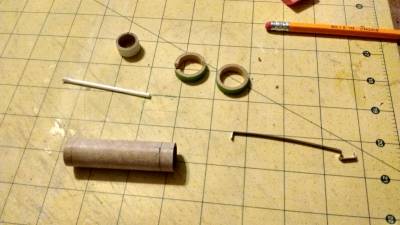

And here we have the pass thru tube, a stripped plastic Qtip shaft. They are hollow, which let's us feed a kevlar thread thru it.
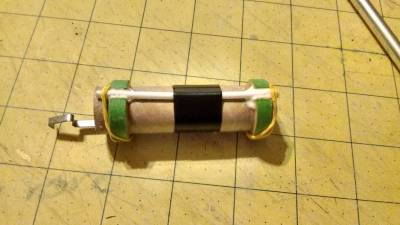
The electrical tape holds both the pass tube and motor clip to the motor tube.
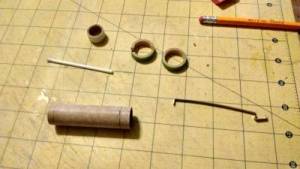
Fins and "engine nacelles"
2015-10-13
Step 3 of the instructions has you prep and assemble the balsa fins and decorations. Sand the outer surfaces, and use the included angle gauge from the header card to cant the outer box sides to the correct angle.
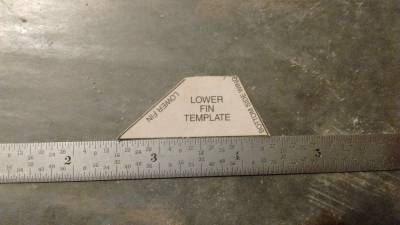
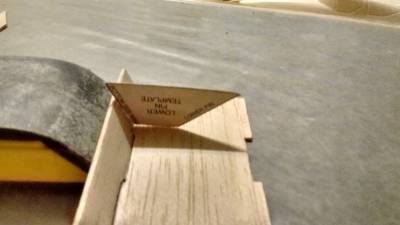
Glue is drying on the lower nacelle. This almost takes 3 hands to accomplish. I ended up tak-ing the sides in place with thin CA followed by gorilla wood glue.
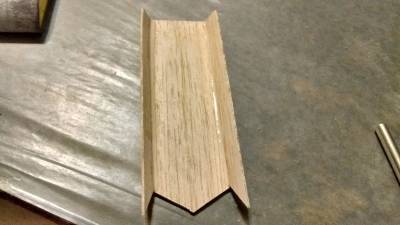
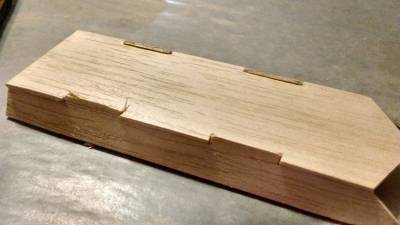
Those tabs on the nacelle will be sanded smooth after the glue dries.
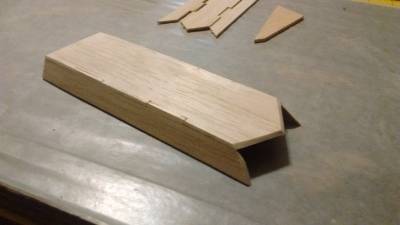
I knocked the tabs flush, and sanded the leading edge to a more "Stealth" appearance. This piece, and the upper nacelle's, will be primed and painted before final assembly. I want this one to look picture perfect.
Moving on to the upper nacelle's, they get assembled the same way as the lower one, in left and right sides.
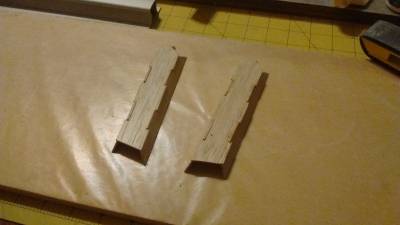
Made the decision to paper cover all of the balsa fins. The engine nacelles seemed to be a weak spot for mounting the upper and lower fins.
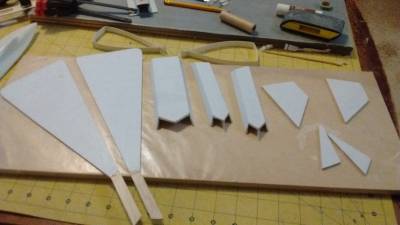
Here we have the beginnings of actual assembly of the main body and the wings. The next picture is of the engine nacelle.
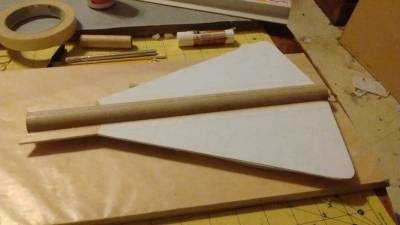
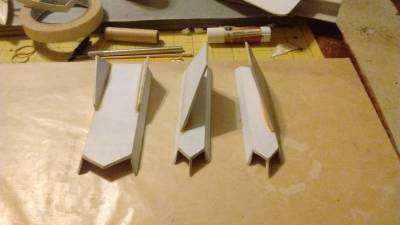
The nacelles will be getting primered and painted before final assembly. I do not believe that I could get the paint inside of them otherwise.
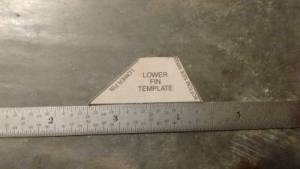
Body Wraps
2015-11-14
Application of the top body wrap. I used a glue stick on both the wrap and body assembly to prevent wrinkles.
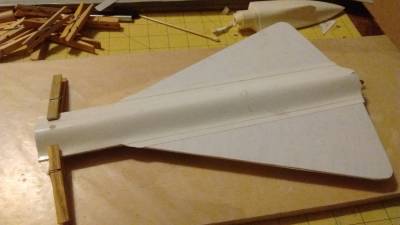
And here we have the bottom body wrap. It does not curve like the top one does, rather it follows a straight taper to the edge of the forward fin.
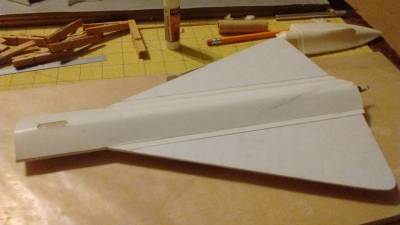
Now, after the local weather cooperates, it will be time to start applying primer and paint.
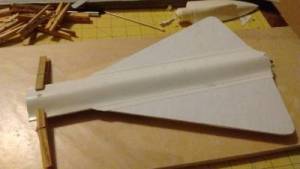
Paint and finishing
2015-12-03
I had a very, very short opportunity for priming and painting. So there are no pictures of the priming process. Priming was pretty straightforward though, clean everything off, spray it on, buff it smooth. Then clean the dust off it, and sprayed some blue on it.
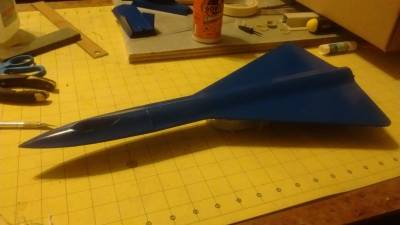
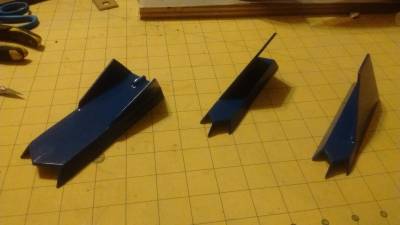
For those of you familiar with the Nightwing, you may be thinking on doing the "Go Wild" paint scheme. Not exactly. I am going to be applying a Blue Angles inspired design. On to the masking.
Masking did not get skipped, I simply forgot to take pictures of it.
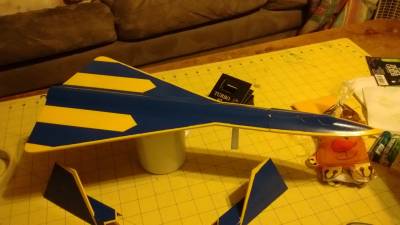
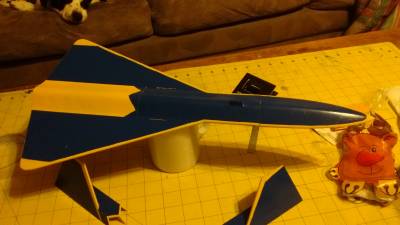
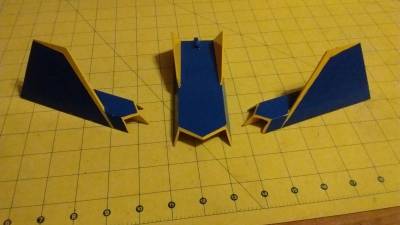
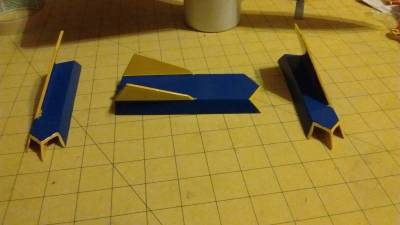
Last but not least, painting of the windows on the canopy. I used silver, per the kit instructions, so that the windows will match the decals.
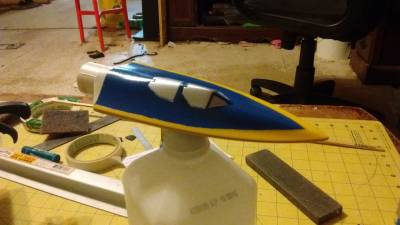
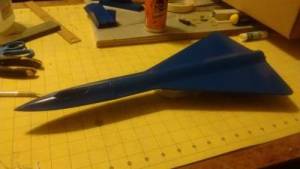
Final assembly
2016-01-10
Glueing together of the last couple of pieces. For the sake of the paint, I am using Elmer's washable Clear school glue.
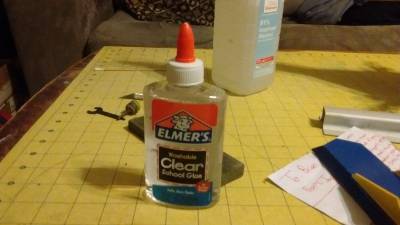
Here we have the gluing together of the upper engine nacelles to the main wing.
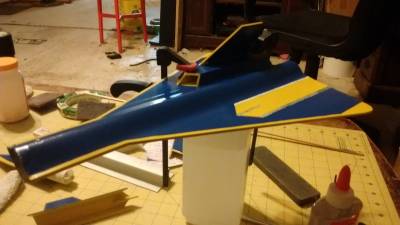
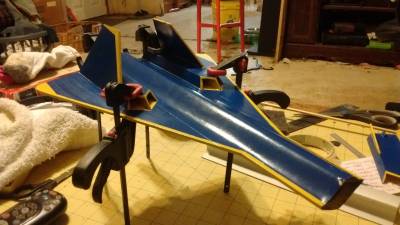
Next comes the bottom nacelle and fins.
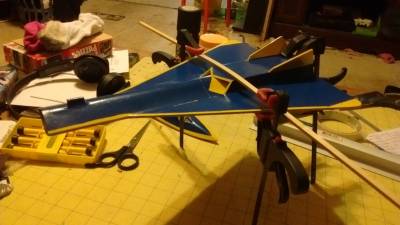
And with that, assembly is finished. Decals and paint touch up next.
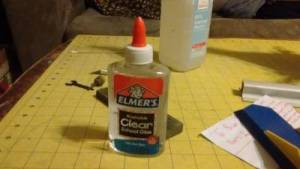
Decals
2016-01-14
Applied the "pressure sensitive ddecals". More commonly known as stickers. For being over 15 years old, the adhesive was still plenty sticky. The decal sheet came with 2 decals for around the canopy. A silver one for the traditional look, and orange for the "Go Wild" paint scheme. I used the silver one.
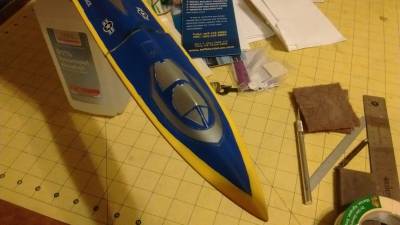

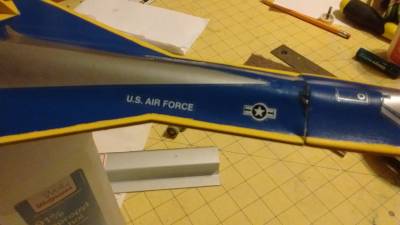
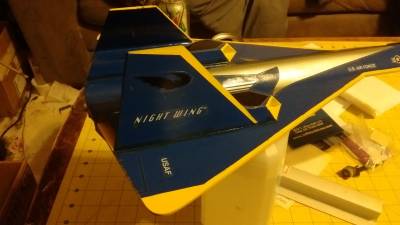
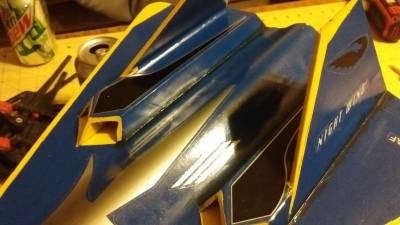
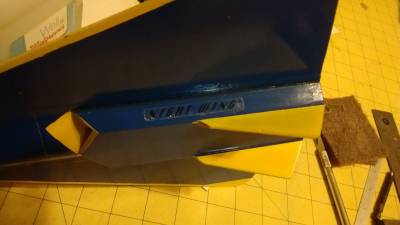
There is even decals to simulate flight control surfaces.
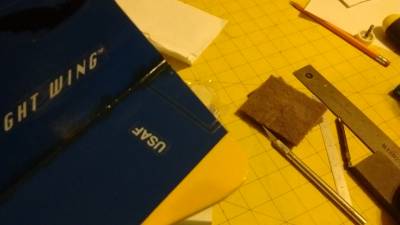
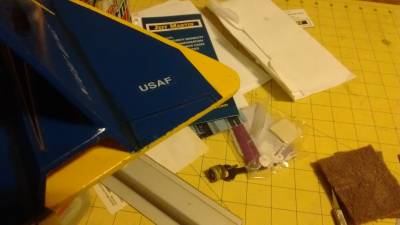
Just need to pack the nose with the 1/4 oz clay weight and tie the parachute to the shock cord.
 |
 |



